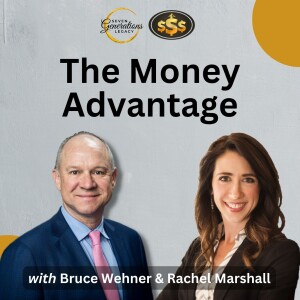
Infinite Banking Options to Access Your Cash Value
 2022-09-12
2022-09-12
Download
Right click and do "save link as"
If you're using Infinite Banking with a life insurance policy, you have multiple options to access your cash value. But which one is the best? Should you always use policy loans? What if you can get a lower interest rate by borrowing against your cash value with a third-party loan?
https://www.youtube.com/watch?v=pbQdVbQ1_q0
Let's discuss all of your options for accessing capital. This includes policy loans, withdrawals, cash value loans from a third party, and even capital from separate sources.
If you want to find out the reasons you might use each, the pros and cons, why interest rates are NOT the best way to make your decision, and the #1 most important thing you need to make sure you're in the position of maximum control ... tune in now!
Table of contentsWhy Pay a Finance Charge? How Does a Policy Loan Work?What is a Withdrawal from Your Cash Value?How is the Interest on a Policy Loan Calculated? Are Interest-Only Payments Better?The Benefit of Unstructured PaymentsBook A Strategy Call
Why Pay a Finance Charge?
One of the major objections to the Infinite Banking Concept is, essentially: Why should I pay to access my own money? Generally, with an IBC strategy, the way to access your capital is by leveraging it via a policy loan. This means that you offer your cash value as collateral for a loan from the insurance company. Because it's a loan, you pay interest on that loan.
This isn’t an unreasonable question. In fact, it’s a good question to ask of any financing method you use. The right solution will depend on how much capital you need, how much you have, what you want to do, and more.
But in general, accessing your cash value through a loan is a good option because you have control. Some of the benefits of a policy loan include:
The flexibility to use that money on anything you want.Tax-free use of your money (* as long as the policy stays in force and does not become a Modified Endowment Contract).Full compounding interest on your cash value because you aren’t withdrawing.Control over when and how you pay the loan back.No application process. This means you can leverage a policy loan in ways you might not do with a bank loan.No credit check, and no impact on your credit report when you take a policy loan.
How Does a Policy Loan Work?
If you want to access your cash value without a withdrawal, you can get a loan from the insurance company’s general fund. The company then puts a lien against the policy value, or the amount that you want to borrow against your policy. When you pay back the loan, you’re paying interest to the company. As you pay back the loan, the lien against your policy is reduced, which frees up your cash value to be used again, if you so wish.
When you take a loan, the company only collateralizes your policy for the amount of that loan. So if you have $200,000 of cash value and you just want a $10,000 loan, the company only uses $10,000 as collateral. This means that if you take that $10k and a few months later have a $100k opportunity, you still have that available to take another loan.
What is a Withdrawal from Your Cash Value?
Instead of taking a loan from the insurance company, you can actually remove money straight from the policy values. If you withdraw less than your cost basis (the equivalent of what you’ve paid in premiums), you can access the money tax-free. However, when you take out more than what you’ve paid into the policy, you cause a taxable event. The IRS sees this as growth on the policy, and is, therefore, taxable income when you take it “no strings attached.” Unlike loans, withdrawals cannot be paid back and thus permanently reduce your policy values.
How is the Interest on a Policy Loan Calculated?
If you’re wanting access to capital and thinking about a loan, you’re likely to compare interest rates between lenders and companies. Insurance companies often have competitive rates,
view more
More Episodes
What is Infinite Banking? Part 3
 2022-08-01
2022-08-01
 2022-08-01
2022-08-01
What is the Infinite Banking Concept? Part 2
 2022-07-18
2022-07-18
 2022-07-18
2022-07-18
What is Infinite Banking, Part 1
 2022-07-04
2022-07-04
 2022-07-04
2022-07-04
Investing in Self-Storage, with Paul Moore
 2022-06-27
2022-06-27
 2022-06-27
2022-06-27
Personal Finance for Beginners
 2022-06-20
2022-06-20
 2022-06-20
2022-06-20
Hire Better People, Faster, with Ryan Englin
 2022-06-13
2022-06-13
 2022-06-13
2022-06-13
2022 Nelson Nash Think Tank Reviewed
 2022-06-06
2022-06-06
 2022-06-06
2022-06-06
How to Protect Your Money Against Inflation
 2022-05-23
2022-05-23
 2022-05-23
2022-05-23
Laundromat Millionaire, Dave Menz
 2022-05-16
2022-05-16
 2022-05-16
2022-05-16
Infinite Banking Objections, Answered
 2022-04-25
2022-04-25
 2022-04-25
2022-04-25
Rich vs. Wealthy – Why Mindset Matters!
 2022-04-11
2022-04-11
 2022-04-11
2022-04-11
012345678910111213141516171819
Create your
podcast in
minutes
- Full-featured podcast site
- Unlimited storage and bandwidth
- Comprehensive podcast stats
- Distribute to Apple Podcasts, Spotify, and more
- Make money with your podcast
It is Free
- Privacy Policy
- Cookie Policy
- Terms of Use
- Consent Preferences
- Copyright © 2015-2024 Podbean.com




